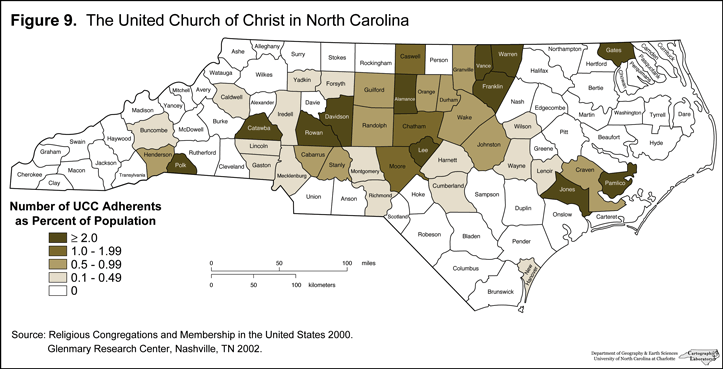See Also: United Church of Christ (Encyclopedia of North Carolina)

The church of Christ suffered a slight decline in its number of adherents between 1990 and 2000. Its congregations are relatively small, averaging 214 adherents per church. The distribution of its congregations is displayed in Figure 9, above. Congregations are present in less than half of the state’s counties. In stark contrast with the ubiquitous Baptists, the county with the highest proportion of religious adherents is Warren, with almost 6% of the population. It is one of only four that show shares of at least 5%. Most of the Church of Christ congregations are found in the central and northern parts of the Piedmont corridor and in a related belt that extends from Raleigh through the New Bern area.
The Church of Christ is the result of mergers of earlier denominations, the Old German Reformed church and the Republican Methodist church. The latter had even earlier ties with the New England Congregationalist church. The German Reformed church located where Germans originally settled in North Carolina, mainly on the Piedmont. The Republican Methodist church, on the other hand, developed primarily in eastern North Carolina. Elements of both patterns can be seen in the distribution today of Church of Christ congregations (Figure 9).